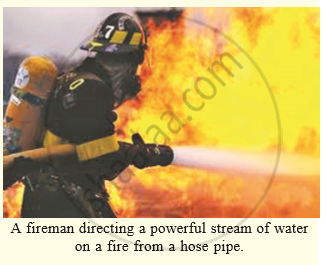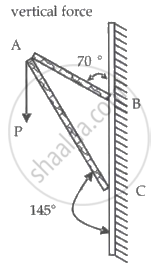Advertisements
Advertisements
Question
According to the third law of motion, action and reaction :
Options
always act on the same body but in opposite directions
always act on different bodies in opposite directions
have same magnitudes and directions
act on either body at normal to each other
Solution
always act on different bodies in opposite directions.
APPEARS IN
RELATED QUESTIONS
If action is always equal to the reaction, explain how a horse can pull a cart.
According to the third law of motion, when we push on an object, the object pushes back on us with an equal and opposite force. If the object is a massive truck parked along the roadside, it will probably not move. A student justifies this by answering that the two opposite and equal forces cancel each other. Comment on this logic and explain why the truck does not move.
Is the following statement true or false :
A rocket can propel itself in a vacuum.
Fill in the following blanks with suitable words :
Forces in a Newton’s third law pair have equal _____________ but act in opposite _____________.
If action is always equal to reaction, explain why a cart pulled by a horse can be moved.
Do action and reaction act on the same body or different bodies ? How are they related in magnitude and direction ? Are they simultaneous or not ?
Explain why, a runner presses the ground with his feet before he starts his run.
State Newton’s third law of motion and give two examples to illustrate the law.
“Wearing helmet and fastening the seat belt is highly recommended for safe journey” Justify your answer using Newton’s laws of motion.
Consider a frame that is made up of two thin massless rods AB and AC as shown in the figure. A vertical force `vec"P"` of magnitude 100 N is applied at point A of the frame.

Suppose the force is `vec"P"` resolved parallel to the arms AB and AC of the frame.
The magnitude of the resolved component along the arm AC is xN.
The value of x, to the nearest integer, is ______.
[Given: sin(35°) = 0.573, cos(35°) = 0.819, sin(110°) = 0.939, cos(110°) = –0.342]
